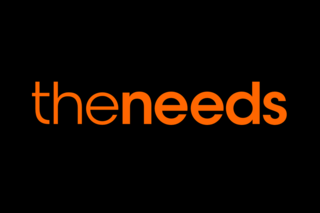Social search is a behavior of retrieving and searching on a social searching engine that mainly searches user-generated content such as news, videos and images related search queries on social media like Facebook, LinkedIn, Twitter, Instagram and Flickr. It is an enhanced version of web search that combines traditional algorithms. The idea behind social search is that instead of ranking search results purely based on semantic relevance between a query and the results, a social search system also takes into account social relationships between the results and the searcher. The social relationships could be in various forms. For example, in LinkedIn people search engine, the social relationships include social connections between searcher and each result, whether or not they are in the same industries, work for the same companies, belong the same social groups, and go the same schools, etc.
A social news website is a website that features user-posted stories. Such stories are ranked based on popularity, as voted on by other users of the site or by website administrators. Users typically comment online on the news posts and these comments may also be ranked in popularity. Since their emergence with the birth of Web 2.0, social news sites have been used to link many types of information, including news, humor, support, and discussion. All such websites allow the users to submit content and each site differs in how the content is moderated. On the Slashdot and Fark websites, administrators decide which articles are selected for the front page. On Reddit and Digg, the articles that get the most votes from the community of users will make it to the front page. Many social news websites also feature an online comment system, where users discuss the issues raised in an article. Some of these sites have also applied their voting system to the comments, so that the most popular comments are displayed first. Some social news websites also have a social networking service, in that users can set up a user profile and follow other users' online activity on the website.

Clojure is a dynamic and functional dialect of the Lisp programming language on the Java platform.
Heroku is a cloud platform as a service (PaaS) supporting several programming languages. As one of the first cloud platforms, Heroku has been in development since June 2007, when it supported only the Ruby programming language, but now also supports Java, Node.js, Scala, Clojure, Python, PHP, and Go. For this reason, Heroku is said to be a polyglot platform as it has features for a developer to build, run and scale applications in a similar manner across most of these languages. Heroku was acquired by Salesforce in 2010 for $212 million.
Samba TV is a television technology company that offers real-time insights and audience analytics. It was founded in 2008 by early employees of BitTorrent, including Samba TV's current chief executive officer, Ashwin Navin. The company develops software for televisions, set-top boxes, smart phones and tablets to enable interactive television through personalization. Through its portfolio of applications and TV platform technologies, Samba TV is built directly into the TV or set-top box and will recognize onscreen content—live or time-shifted—and make relevant information available to users at their request.
Summify was a social news aggregator founded by Mircea Paşoi and Cristian Strat, two former Google and Microsoft interns from Romania. The service emailed its users a periodic summary of news articles shared from their social networks based on their relevance and importance. The platform supported Twitter, Facebook, and Google Reader accounts.

Pocket, previously known as Read It Later, is a social bookmarking service for storing, sharing and discovering web bookmarks. Released in 2007, the service was originally only for desktop and laptop computers and is now available for macOS, Windows, iOS, Android, Windows Phone, BlackBerry, Kobo eReaders, and web browsers.

Aptoide is an online marketplace for mobile applications which runs on the Android and iOS operating systems. In Aptoide, unlike the Android-default Play Store and iOS-default App Store, there is not a unique and centralized store; instead, each user manages their own store. The software package is published by Aptoide S.A., a for-profit company incorporated in 2011, and headquartered in Lisbon, Portugal.

News360 was a personalized news aggregation app for smartphones, tablets and the web. It attempted to learn a user's interests by analyzing their interaction with news stories on the app and using semantic analysis and natural language processing to create an Interest Graph and construct a unique feed of relevant content for each user. The app claimed an audience of more than 4 million users.
Meteor, or MeteorJS, is a partly proprietary, mostly free and open-source isomorphic JavaScript web framework written using Node.js. Meteor allows for rapid prototyping and produces cross-platform code. The server-side MongoDB program is the only proprietary component of Meteor and is part of the Meteor download bundle. It is possible to use Meteor without using the server-side MongoDB. It uses the Distributed Data Protocol and a publish–subscribe pattern to automatically propagate data changes to clients without requiring the developer to write any synchronization code. On the client, Meteor can be used with any popular front-end JS framework, Vue, React, Svelte, Angular, or Bazel.
Testdroid is a set of mobile software development and testing products by Bitbar Technologies Limited.

Plotly is a technical computing company headquartered in Montreal, Quebec, that develops online data analytics and visualization tools. Plotly provides online graphing, analytics, and statistics tools for individuals and collaboration, as well as scientific graphing libraries for Python, R, MATLAB, Perl, Julia, Arduino, JavaScript and REST.
Wickr is an American software company based in New York City. It is known for its instant messaging application of the same name. The Wickr instant messaging apps allow users to exchange end-to-end encrypted and content-expiring messages, and are designed for iOS, Android, Mac, Windows, and Linux operating systems. Wickr was acquired by Amazon Web Services (AWS) in mid-2021. The free version of the app was discontinued in December 2023.

Maps.me is a mobile app for Android, iOS and BlackBerry that provides offline maps using OpenStreetMap data. It was formerly known as MapsWithMe. In November 2014, it was acquired by Mail.Ru Group and became part of its My.com brand. In September 2015, the app was open sourced and a free and open-source software version was additionally made available on F-droid until the application was sold to the payment processor Daegu Limited, part of Parity.com, which changed the application user interface and content, leading original MapsWithMe founders Alexander Borsuk and Viktor Govako to release an open source ad- and tracker-free fork called 'Organic Maps' in response.
Eclipse Deeplearning4j is a programming library written in Java for the Java virtual machine (JVM). It is a framework with wide support for deep learning algorithms. Deeplearning4j includes implementations of the restricted Boltzmann machine, deep belief net, deep autoencoder, stacked denoising autoencoder and recursive neural tensor network, word2vec, doc2vec, and GloVe. These algorithms all include distributed parallel versions that integrate with Apache Hadoop and Spark.

Theneeds is a search engine that features content tailored to users' interests, such as articles, news, videos, social posts, and other media.

Netlify is a remote-first cloud computing company that offers a development platform that includes build, deploy, and serverless backend services for web applications and dynamic websites.
Genies is an American avatar technology company founded by Akash Nigam and Evan Rosenbaum in 2017. Genies' consumer app allow users to create fully personalized avatars to be used in apps such as Giphy, iMessage, and Instagram. Genies also offers a software development kit (SDK) enabling brands to create a branded avatar experience and online marketplace directly in their apps. The company also consists of an Avatar Agency that creates digital versions of its clients.
Shortcut is project management software for software development teams developed by Shortcut Software, Inc, an American software company. Until September 2021 it was known as Clubhouse.

Ashish Bhatia is a US-based Indian engineer with specializations in mobile security and social media, who developed Google's predictive response generation system. He is also an angel investor, public speaker and advocate for startups









